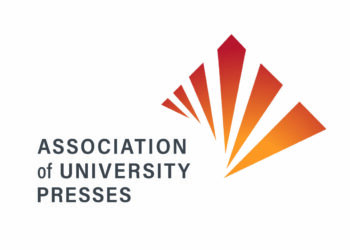Over the last few years, we have been seeing extensive discussions around sustainability, sustainable development, and the Sustainable Development Goals (SDGs) in scholarly publishing. In a recent piece I wrote for EON, I argued that a valuable dimension of sustainability that is hardly talked about is resilience. To sustain, we shouldn’t only think of the environmental, social, and economic aspects of sustainability. In a world full of natural and man-made shocks and stresses, we need to be resilient against those affecting the academic publishing ecosystem.
In January 2021, I explored resilience in scholarly publishing for the first time in a Learned Publishing opinion piece. Of course, back then, the COVID-19 pandemic was the main shock we all were facing. In that article, I showed that by using five different capitals (namely, human, social, financial, physical, and natural), academic publishers and journals could show their resilience by being robust and resourceful, by having redundancy in the system, and by showing rapidity in recovering from a shock.

Speaking of other shocks, scholarly publishing entities may face natural disasters, such as floods, storms, heatwaves, and wildfires, based on their geographical locations. Economic meltdown, wars, civil wars, and political turmoil are examples of man-made shocks — so are mergers and acquisitions and sudden significant changes in funders’ and governments’ policies on scholarly communication. On the other hand, examples of stress include mass-scale unethical practices by predatory publishers and paper mills, as well as widespread misuse of generative AI. Academia having an out-dated philosophy like ‘publish or perish’, which continues pushing young researchers to the edge, is also a stress and so are high subscription fees and article processing charges (APCs) unaffordable for researchers from less developed countries. The relentless aggression from certain sections of our society against scientific evidence will also fall under this category.
In simplest terms, resilience is about bouncing back after facing a shock or a stress. But in reality, it is more than that. Being resilient means an entity is capable of maintaining its functions and identity despite disturbances. It also means that it is capable of adapting to the changed situation by making small adjustments. And, it is able to transform itself to the core to face future disturbances. The scholarly publishing industry, therefore, can show resilience against the above-mentioned shocks and stresses by building its capacities in three major ways.
‘Absorptive capacity’ is the ability to minimize exposure to and to cope with shocks/stresses on a short-term basis. This will not only help us to maintain stability, but will also support to avoid any significant damage to our journals or organizations, or the industry as a whole. In March 2023, Clarivate delisted 50 journals, which was indeed a shock to many journals and publishers. As a coping mechanism, Wiley abandoned special issues by its Hindawi subsidiary accepting millions of dollars loss. Retracting thousands of articles in respond to paper mills’ invasion is another example of such coping strategy.
The second type of capacity is ‘adaptive capacity’, which helps us to be flexible, and to make incremental adjustments within our organizations and the larger systems in which we operate, in response to long-term social, economic, and environmental changes taking place around us. If we consider the recent surge of AI use as a shock, publishers introducing AI policies and outlining do’s and don’t’s, and scholarly publishing organizations arranging capacity development programs on AI are contributing to build adaptive capacity. Similarly, in response to the on-going open access movement, we see a wide range of open access financing models (e.g., Diamond Open Access, APCs, Transformative Agreements, and Subscribe to Open) are in practice complementing each other. Early detection and warning systems against paper mills are also a part of adaptive capacity as Wiley’s AI-powered Papermill Detection Service promises to offer.
‘Transformative capacity’, our ability to change ourselves to the core, is the ultimate way to tackle disturbing events, thus showing resilience. Such transition demands structural changes in our prevailing system, which may hinder the absorptive and adaptative capacities to be expressed effectively. This may include, for example, the way we run our journals and publishing houses, transparency we maintain regarding our business models, the philosophy and strategy we follow while deciding on an investment, and how we appreciate voluntarism within the publishing ecosystem. Examples of transformative capacity include IOP introducing double-anonymous and transparent peer review system; and publishers adopting and mainstreaming Diversity, Equity, Inclusion, and Accessibility (DEIA) policies. Launch, promotion and adoption of the SDG Publishers Compact or making real efforts to reduce organizational carbon footprint are good examples of transformative capacity. Similarly, while recruiting and promoting academic staff members, the Utrecht University’s abandonment of impact factor as an assessment criterion in favor of candidates’ contribution to collaborations, public engagement, and open science is essentially a departure from the ‘publish or perish’ culture. Hypothetically speaking, if the European Commission’s Open Research Europe (ORE) starts operating as a collective non-profit open access publishing service from 2026 or if for-profit open access journals/publishers start publicly disclosing how they calculate APCs, these would be two more examples of academic publishing industry gaining transformative capacity.
It is important to understand that these three types of capacities do not have to be gathered successively. Rather, all could be attained simultaneously in response to observed or anticipated disturbances, situations, or events. But a complete absence of any resilience capacity creates the potential for a total collapse of an entity, be it a journal, a publisher, an organization, or a system.
Further, being resilient doesn’t mean that once an action is taken and a capacity is demonstrated, that the issue is resolved. In many cases, continuous responses are needed. For example, the recent developments in favor of DEIA in scholarly publishing are structural responses to the lack of diversity, inequity, and exclusion. However, as noted in a recent Scholarly Kitchen article, there still remain counter views and narratives on DEIA, which are critical to acknowledge and discuss, not to overlook.
Another pertinent concern is, in the process of being resilient, whether journals and publishers are making other stakeholders of the publishing ecosystem vulnerable. For example, in response to the open access movement, journals are moving from subscription-based to APC-based modalities. While making the transition, many hybrid journals have been criticized for ‘double dipping’ by charging both the subscribers and APC-paying authors for the same articles. Similarly, in case of the ‘Delisting-gate’ of March 2023, as noted earlier, we may praise Clarivate for its action, but while journals were penalized by losing their impact factors and revenues due to inappropriate editorial or production practices, is anyone thinking of the impact this had on authors? These authors have already paid millions of dollars as APCs to the now-delisted open access journals. Who is going to compensate the financial, reputational, and emotional damage authors are facing due to the delisting?
Furthermore, being responsive for a short time due to a shock is not enough to show resilience. Prioritizing action to reach a goal is crucial. In the announcement of delisting 50 journals, Clarivate mentioned that they were investigating another 450 journals. During May 2023-July 2024 (15 months), the agency delisted another 152 journals. If they continue at this pace (i.e., delisting 10 journals per month), they will need a total of 46 months, since the declaration of possible 450 suspected journals, to delist all. Limited resources to reassess journals might be a reason for this sluggish pace. But, over the same 15 months, Clarivate used enough resources to assess and accept 673 new journals (i.e., 2 journals every day, if they avoided working on weekends). It seems that the painfully slow pace of delisting is not a case of resource constraints. It rather shows that, due to its other priorities, a reputed indexing agency would allow many suspected journals with unethical practices to continue enjoying Clarivate-assigned Impact Factors, thus deceiving readers and authors, for almost four years. Such a casual approach to responding was seen in other cases of misconduct as well (e.g., misuse of AI and ‘hijacked’ journals).
As we continue our conversations and actions on sustainability and sustainable development in scholarly publishing, we need to bring resilience to the discussion table as well. Without proper understanding of our resilience, we may not effectively be able to protect our progress, achievements, and success.
Discussion
11 Thoughts on "Understanding Resilience in Scholarly Publishing"
Thank you for your insightful article. I perceive scholarly resilience from a different perspective. As a PhD student in Nursing Science, I am learning how to write for scholarly publication. It has required a lot of determination, patience, and resilience to keep moving forward as I and my fellow cohorts learn the language of scholarship. I appreciated your points and opening up an important conversation regarding resilience in this area.
Thank you Faith, so much for sharing the challenges early-career researchers have to face. It reminds me of my own learning curving that started around the turn of this century. As I look back, I believe improving our individual human capital is the key here. In addition to some of the qualities you have noted in your comment, basic skills to embrace the language we use in our respective disciplines are also important. But, we also need to capitalize on our social capital as well. This could be done by using our peer networks, getting advice from our (institutional / non-institutional) mentors, and taking advantage of formal training program on scholarly communication offered by different learned societies and other organizations working in knowledge space (e.g., AuthorAID of INASP). I believe these could help us to overcome the initial barriers you mentioned. And once we pass that phase, we would be able to think of how to transform the scholarly ecosystem, so that the next generation of scholars find this initial phase less challenging. Wishing you all the best with your research and scholarly writing.
Irfanullah’s insight and treatment of resilience in the publishing industry should be credited for opening another grey area. The piece is quite revealing, and it demonstrates the author’s reading of the current publishing environment.
However, it throws up another challenge of how young researchers can be guided to avoid predatory journals. Resilience in the publishing space is good, but awareness of multidimensional factors is imperative through exposure from industry/resource experts like Infarnullah.
Raphael Sunday
Thank you for your thoughts on predatory journals. It is indeed a challenging field. I believe there are lots of tools available for early-career researchers (ECRs) to explore (e.g., https://libguides.library.arizona.edu/c.php?g=945334&p=6815522), thus to avoid predatory journals. Not being aware of which one is a predatory journal is one challenge, but ignoring the cues despite knowing them is a much bigger challenge. If our system (e.g., recruitment/ promotions/ funding rules of academic/research organizations) may push ECRs to fall into the trap of such predatory journals. How can we overcome that challenge? I think only focusing on capacity building of ECRs is not enough. We need to work at the system level, so that it acknowledges the undue pressure on ECRs, which push them to become the preys of predatory journals.
Our March 2023 blog stated that 500 journals were identified by our “new, internally developed AI tool to help us identify outlier characteristics that indicate that a journal may no longer meet our quality criteria”. This statement appears to have been misconstrued as an expectation that, following re-evaluation, all 500 flagged journals would eventually be delisted. This misunderstanding appears to be the reason for the assertion in the article that Clarivate has purposefully deprioritized delisting journals that do not meet our quality criteria. This is absolutely not the case. Quality evaluations of indexed content remains a top priority – to the extent that we have paused other activities so that we can dedicate more resource for these investigations. In some cases, journals no longer meet our quality criteria and these journals are delisted. In other cases, journals pass our quality criteria and remain covered in Web of Science. We provide a monthly update of coverage changes in the Monthly Changes Archive section of the Master Journal List for full transparency.
Thank you for elaborating the process of evaluation and delisting practiced by Clarivate. I do appreciate the fact that reevaluation of journals already indexed by Clarivate is a continuous process, and it can go beyond the 500 journals mentioned in March 2023’s blog.
Would you please share a link to a report or a news item or a blog where an update is given only on the status of those 500 journals (or the to-be-evaluated 450 journals, as of March 2023)? I was wondering how many of the remaining 450 journals have been evaluated as of July 2024, and how many of those have been delisted.
If such information is yet to be made public, is Clarivate planning to disclose it soon?
The tool referred to in our blog (https://clarivate.com/blog/supporting-integrity-of-the-scholarly-record-our-commitment-to-curation-and-selectivity-in-the-web-of-science/ ) identifies outlier characteristics (such as volume of publication output) and is used to prioritize which journals to re-evaluate. Journals flagged by the tool are reviewed by editors and, if signs of concern are observed, evaluated against our standard selection criteria. All 500 journals have been reviewed by the Web of Science editorial team. Of the remaining ~450, a further 10 journals have been de-listed, with around 50 remaining under investigation due to their more complex nature.
We provide a monthly update of coverage changes in the Monthly Changes Archive section of the Master Journal List (https://mjl.clarivate.com/collection-list-downloads) for transparency.
Thank you for sharing an update on the evaluation of the remaining 450 journals.
Following up on Rachel Scheer’s comment (Aug 28, 2024, 4:15pm), what criteria justify quality control changes, and are journals promptly notified prior to quality control changes? Such notification or publicity will make journals drive for relevance, and l doubt if any journal wants to be deliberately redundant.
Raphael Sunday
We evaluate journals against the same set of 24 quality criteria for both adding and removing (delisting) journals from the Web of Science. These are publicly available to view online here: https://clarivate.com/products/scientific-and-academic-research/research-discovery-and-workflow-solutions/webofscience-platform/web-of-science-core-collection/editorial-selection-process/
Our policy for delisting journals can be found here:
https://clarivate.com/products/scientific-and-academic-research/research-discovery-and-workflow-solutions/webofscience-platform/web-of-science-core-collection/editorial-selection-process/editorial-policies-category-change-requests-and-appeals-process/#removal
It is unclear how the author distinguishes between legitimate and unethical journals. One might say any manifestation of commercialism in academia is an abomination in its own right. Oligarchist academic publishing is as much of an ecosystem as a pustule, that is wholly unwanted and unneeded.
Mention is made as to who will compensate authors of delisted journals. Why, the publishing kulaks of course!
It is elementary.



